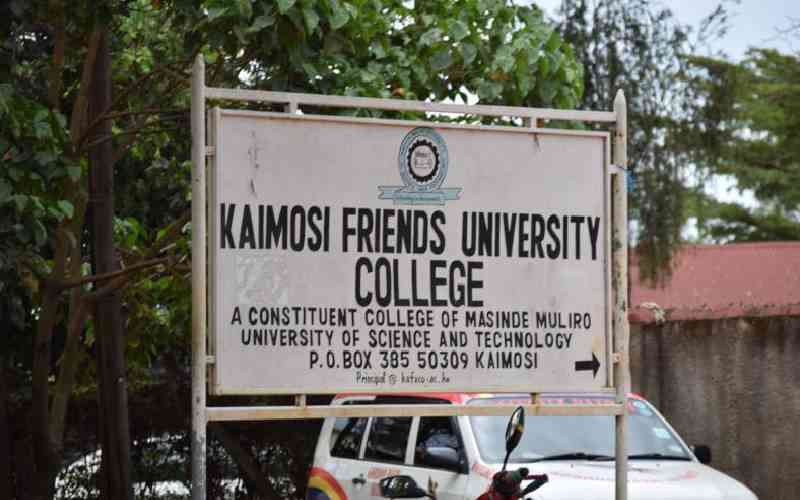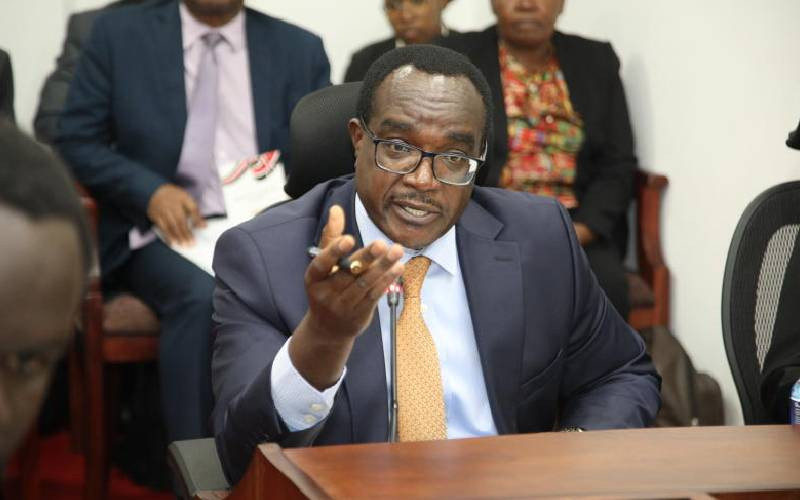
Only 70,000 students are likely to get admissions in public universities as last year's KCSE examination results are released today.
Data on declared capacities for the 31 public institutions for the year 2015/16 shows that only 67,157 slots are available in public universities and constituent colleges.
The Standard has, however, established that the universities would create some additional slots to accommodate the record number of candidates who sat last year's KCSE examination. But reports suggested the total number of available spaces in public universities could only rise slightly above 70,000. Some 525,802 candidates sat last year's KCPE, reflecting an additional 42,172 students over 2014.
Government statistics also show that the traditional 53 mid-level diploma and certificate colleges can absorb up to 45,000 students.
Vocational and Technical Training Principal Secretary Dina Mwinzi said the Government has recently constructed new colleges and refurbished some of the existing ones to increase capacity.
The total available capacity is estimated to hit 100,000 by the time of admission later this year.
This means that an additional 55,000 spaces will have been created under the Government's and development partners' Sh27 billion investment plan. It also means that only 170,000 students who sat KCSE are guaranteed places in Government institutions.
University capacity data seen by The Standard reveals that Moi University is likely to absorb the highest number of students with a declared capacity of about 5,826.
Kenyatta University declared vacancies for about 5,650 while University of Nairobi has a capacity of about 5,550.
The number of students who fail to gain admission to Government institutions have been increasing over the years, a matter that Mwinzi said is being addressed through expansion strategy of middle-level colleges across all constituencies.
Statistics from the previous year reveal that of the 483,630 candidates who sat the 2014 KCSE exams, only 149,717 scored the minimum university entry grade of C+ and above. This was, however, a remarkable increase from the 123,365 candidates who scored the same grade in 2013.
The board set grade B of 60 points as the cut-off mark for placement of male students to degree programmes and B- (minus) of 58 points for female candidates during last year's admission.
Some 1,493 students benefited from affirmative action based on gender, or were from minority groups, or persons with disabilities.
Some 59,688 students were placed in programmes of their choice, reflecting about 88 per cent success of the total placements.
Stay informed. Subscribe to our newsletter
But experts have warned the scramble for university degree courses is starving middle-level sectors of much-needed skills.
It emerged that Kenya is grappling with an estimated gap of about 30,000 engineers, 90,000 technicians and 400,000 artisans, according to the education strategy paper for 2014-2018.
"The shortage of middle-level technicians and artisans is hampering the country's economic growth prospects," reads the Africa Development Bank Group report.
 The Standard Group Plc is a
multi-media organization with investments in media platforms spanning newspaper
print operations, television, radio broadcasting, digital and online services. The
Standard Group is recognized as a leading multi-media house in Kenya with a key
influence in matters of national and international interest.
The Standard Group Plc is a
multi-media organization with investments in media platforms spanning newspaper
print operations, television, radio broadcasting, digital and online services. The
Standard Group is recognized as a leading multi-media house in Kenya with a key
influence in matters of national and international interest.
 The Standard Group Plc is a
multi-media organization with investments in media platforms spanning newspaper
print operations, television, radio broadcasting, digital and online services. The
Standard Group is recognized as a leading multi-media house in Kenya with a key
influence in matters of national and international interest.
The Standard Group Plc is a
multi-media organization with investments in media platforms spanning newspaper
print operations, television, radio broadcasting, digital and online services. The
Standard Group is recognized as a leading multi-media house in Kenya with a key
influence in matters of national and international interest.









